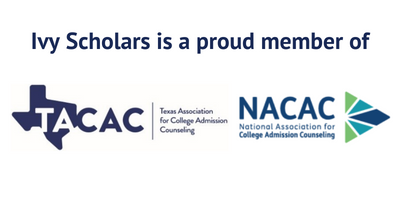Recently, the New York Times published a worrying article about a crisis facing scientific research. One which, if left unaddressed, threatens the very foundations of scientific advancement and progress. This is alarming, especially at a time when more and more students are becoming interested in pursuing research themselves, something we are eager to help them pursue ethically.
In this article, we’re going to explore this crisis; what’s going on, why these are problems, and how it may come to impact high school students particularly. We’re also going to give some suggestions on how this can be fixed, and how high school students themselves can contribute to a solution. Let’s jump right in!
Why is There a Research Crisis?
Scientific research, most commonly pursued by professors at universities, is the backbone of many modern advancements. Everything from stealth technology to machine learning tools began as scientific papers written by professors, and the research they undertake opens up broad avenues of advancement for society.
All research that is done is based on work done previously. Just as Einstein needed to learn the laws of Newton before he could produce his own physics equations, so too do current scientists need to understand their fields, and the work already done. Researchers rely on published research to be accurate, unbiased, and factual.
Increasingly, however, published research is being flooded with flawed, faked, or unsubstantiated results. Now, there have always been some issues with this; disingenuous scholars are sadly nothing new. What has changed, however, is the absolute scale of the problem, with an increasing percentage of all published research showing signs of malfeasance, from faked images to manipulated data to nonsensical text to non-duplicatable results.
This is a major problem for research for two reasons. First, the larger proportion of papers in a field published which are fraudulent, the harder it becomes to find trustworthy and accurate results. Second, a fraudulent paper isn’t only bad science, but also impacts any paper which tries to build upon its conclusions. If research is done stating that rats verifiably love antidepressants, then any paper which tries to build upon those results will be on unstable ground as well. Thus these fraudulent papers poison the well of scientific discourse.
How Does the Research Crisis Impact High School Students?
This is clearly a problem, but then, is it really one high school students need to be worried about? After all, they already have a lot on their plates; grades, homework, friends, jobs, clubs, college applications; is this something that they need be aware of? The answer is yes, because this impacts high school students in two ways, now and in the future; we will review both issues in turn.
The issue for current students is simple; many high school students are pursuing independent research projects, and when they do, they risk falling victim to these fraudulent papers. The students we work with are both eager and clever, but many are inexperienced at research; without the guidance of their mentor, they are likely to have some trouble differentiating a paper which is fraudulent from one which isn’t.
In our research program, one of the key things we teach students how to do is how to read and evaluate research papers, to know which ones to trust, and to gain evidence in support of their own research goals. Students without such guidance may be taken in by papers with faked data, and in so doing conduct illegitimate research.
As an example, imagine a student trying to find a project for a science fair. They go digging through papers, and find one on the spread of an invasive organism through their region. They decide to conduct a parallel study, citing this paper’s methodology. Unbeknownst to the student, however, the paper they cite faked their data and examples, and drew unsupported conclusions. When the student tries to follow their methodology, they get no results, or wildly varied results, and end up with an unsatisfactory conclusion.
This is a real problem, and the more fraudulent papers that get published, the more likely students are to encounter them, and unknowingly try to model their own work on these flawed examples.
Future Students
High school students, eventually, become adults. Those adults then go on to do many things, but many of them will be entering the sciences, or fields based on them like engineering. These fields are already experiencing problems due to an increase in fraudulent papers, and these will only become more serious over time.
As AI tools become more prevalent, the barrier of entry to academic fraud becomes lower; even if the output is meaningless, it is very easy to create. As the number of these papers grows in relation to legitimate work, it threatens to overwhelm it, so that when the high school students of today try to enter research or the realms of development, they are faced by an overwhelming deluge of falsehoods.
This is a grim portrait of the future, and one which may still be averted, but is worth being aware of, especially for those students with an interest in STEM and related fields (though those interested in Humanities and Social Sciences are facing similar issues). Thus this problem is one that concerns high school students, though that fact may not be readily apparent.
What Can High School Students Do?
Now, as adults are often far too eager to do, I’m going to talk about how high school students can help solve a problem not of their causing. This is a lot to ask, and I certainly don’t expect students to solve these problems on their own. The causes are structural, academic systems with too much of a focus on publication at all costs and a proliferation of predatory journals with low or non-existent standards. These must be addressed institutionally as well, but there are still some things students can and should do.
Learn What Good Research Looks Like
One of the best things you can do is to learn how to protect yourself from these kinds of papers, especially if you are looking to conduct research of your own. This is a skill, one that must be learned, but which grants excellent returns. It is, unfortunately, difficult to do this yourself.
We recommend finding papers you know to be reputable to start with, and working to understand what makes them functional. How are they structured, how do they describe the work they did, and explore the conclusions they reached based on the data they gathered. If possible, it is very helpful to have a mentor to work with on this, someone who is already familiar with the research process. You can even find these in your high school; some of your teachers likely have experience, or can point you to resources to get started.
Not Contributing to the Problem
This should go without saying, but it does bear repeating anyway. If you are pursuing research of your own, it should be done at a high standard, both in terms of collecting and analyzing your data, and in publishing and disseminating it. It can be frustrating to test a hypothesis and end up with a null result, or one you didn’t expect, but this is still valuable data, worth sharing with the broader scientific community.
Nullification Testing
Finally, and perhaps most importantly, high school students can in a small but valuable way help deal with this as an issue. This is because the way these papers often come to light is when researchers notice and call out these issues; indeed it was a large meta-analysis on this phenomenon by a number of top researchers that caused the New York Times to publish the article in the first place. This might be a bit ambitious as a high school project, but smaller scale falsification testing is very possible.
A useful, and often overlooked, way to contribute to research are falsification studies, where you redo an already published experiment to see if you get the same results. Understandably, professors are usually reticent to do these, but they are a great introductory study for students. If you find a study with an interesting idea, but with writing or data or figures that seem questionable, then performing and publishing a falsification study will materially contribute to the good of the field.
Final Thoughts
It often seems like the news is always full of crises, which is perhaps the case; they need to sell newspapers and get clicks somehow. This is another, but is also something of a legitimate problem that high school students may need to grapple with, especially as they become increasingly involved in research.
We hope this article has given you insight into this as a problem, and into what you can do about it. If you are interested in pursuing research yourself, and want guidance on avoiding this or other pitfalls, then our research mentorships can help. We pair students with experienced and well-published researchers, able to guide them through every step. To learn more about this, or how we can help you with other aspects of your college applications, then schedule a free consultation with us today. We’re always happy to hear from you.








